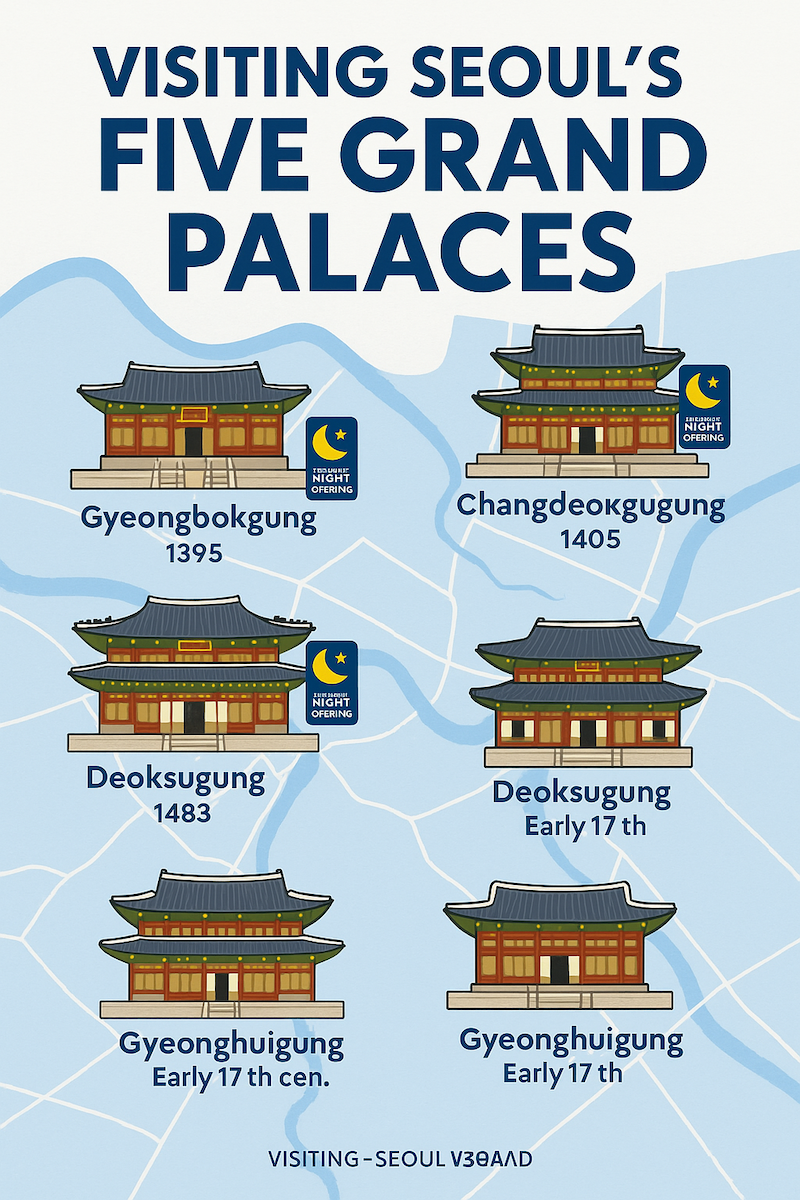Introduction: Discovering Yongmunsa Temple in Yangpyeong
Nestled deep in the mountains of Yangpyeong County, just east of Seoul, lies Yongmunsa Temple (용문사, 龍門寺). Known for its serene atmosphere, rich Buddhist heritage, and most famously the 1,100-year-old ginkgo tree, Yongmunsa is one of the most rewarding destinations for those who want to escape the busy streets of Seoul and experience both history and nature.
What makes Yongmunsa particularly appealing for foreign travelers is that it is relatively easy to reach by train, it offers a true Korean temple experience without requiring an overnight stay far from the capital, and it provides a unique combination of cultural immersion and scenic beauty.
For many visitors, a day trip to Yongmunsa becomes an unforgettable highlight of their time in Korea. In this guide, we’ll dive into its history, what to expect in each season, how to get there, dining options around the temple, and tips to make your visit smooth and meaningful.
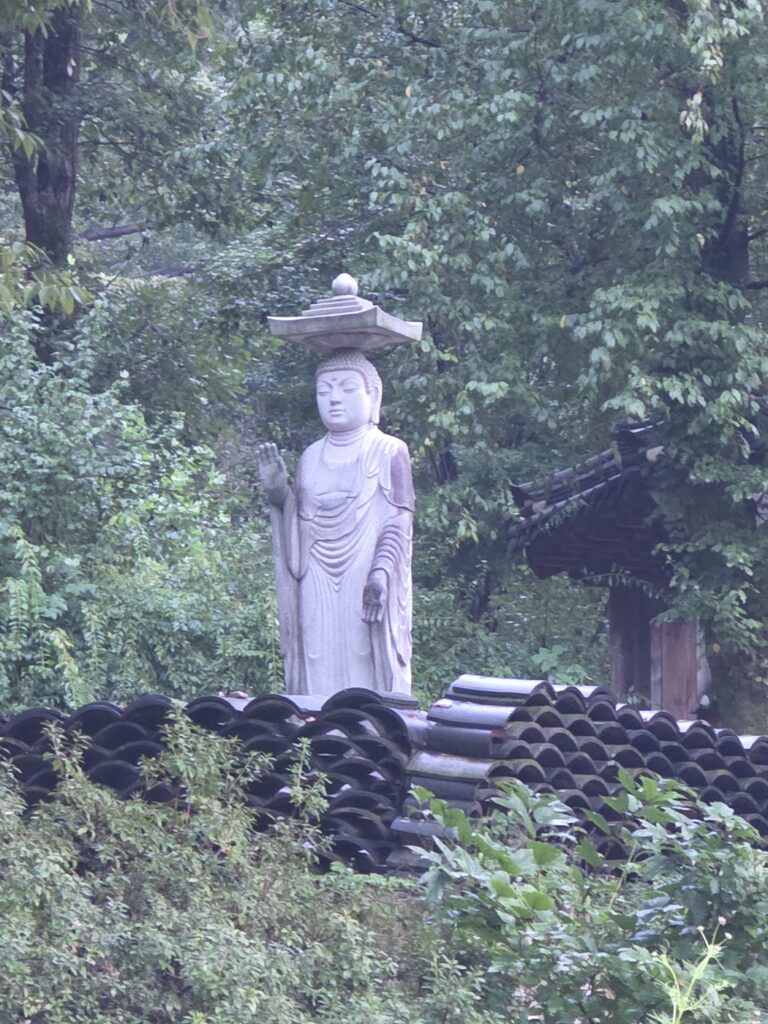
The History of Yongmunsa Temple
Yongmunsa Temple dates back to the 10th century, originally founded during the Unified Silla dynasty. Over the centuries, it has been rebuilt and expanded multiple times, serving as both a center of Buddhist practice and a refuge during troubled times in Korea’s history.
The temple’s name, “Yongmun” (龍門), means “Dragon Gate,” a symbol of transformation and spiritual passage in East Asian culture. For monks and laypeople alike, Yongmunsa represents a gateway to a more peaceful state of mind, removed from worldly distractions.
Today, Yongmunsa is part of the Jogye Order of Korean Buddhism and remains an active temple. Visitors can encounter monks in their daily routines, hear the resonant sound of temple bells, and witness Buddhist rituals that have been practiced for centuries.
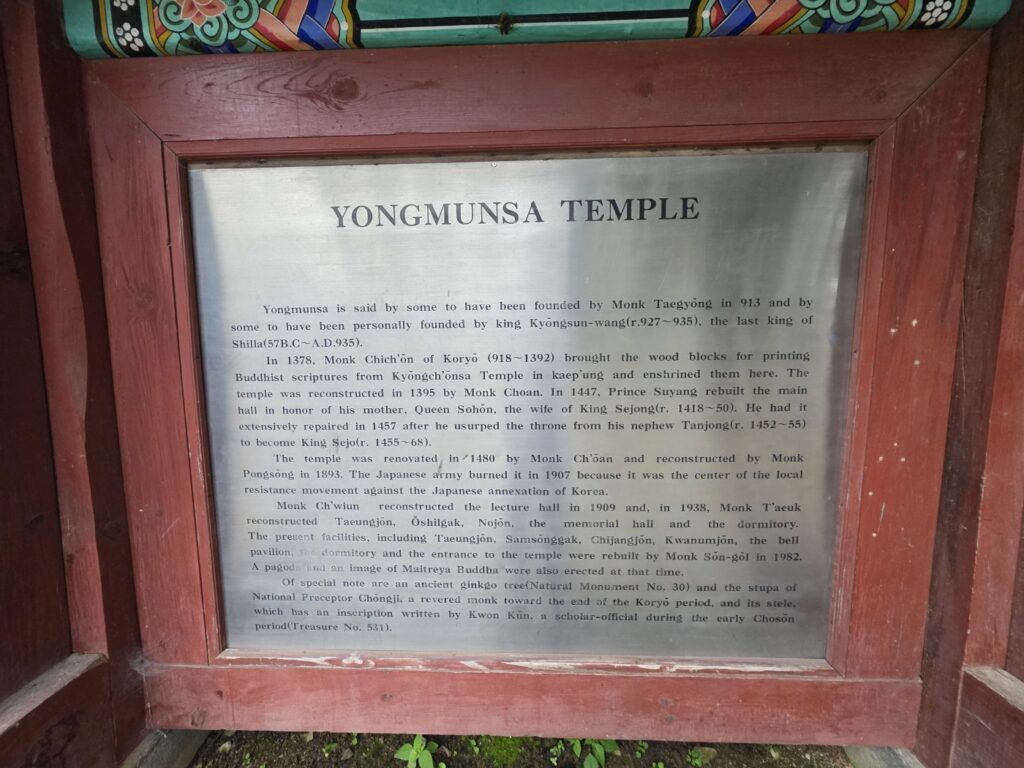
The Iconic 1,100-Year-Old Ginkgo Tree
One of the main attractions at Yongmunsa is the giant ginkgo tree standing proudly in front of the temple complex. Believed to be over 1,100 years old, it is the largest ginkgo in Asia and has been designated as a natural monument of South Korea.
The tree measures over 60 meters tall and nearly 12 meters in circumference, making it not only a breathtaking sight but also a living witness to Korea’s long history. In autumn, when its leaves turn bright golden-yellow, the sight of the temple framed by this majestic ginkgo draws thousands of visitors.
For many, this tree symbolizes endurance, wisdom, and resilience—qualities that resonate deeply with the temple’s atmosphere of contemplation.
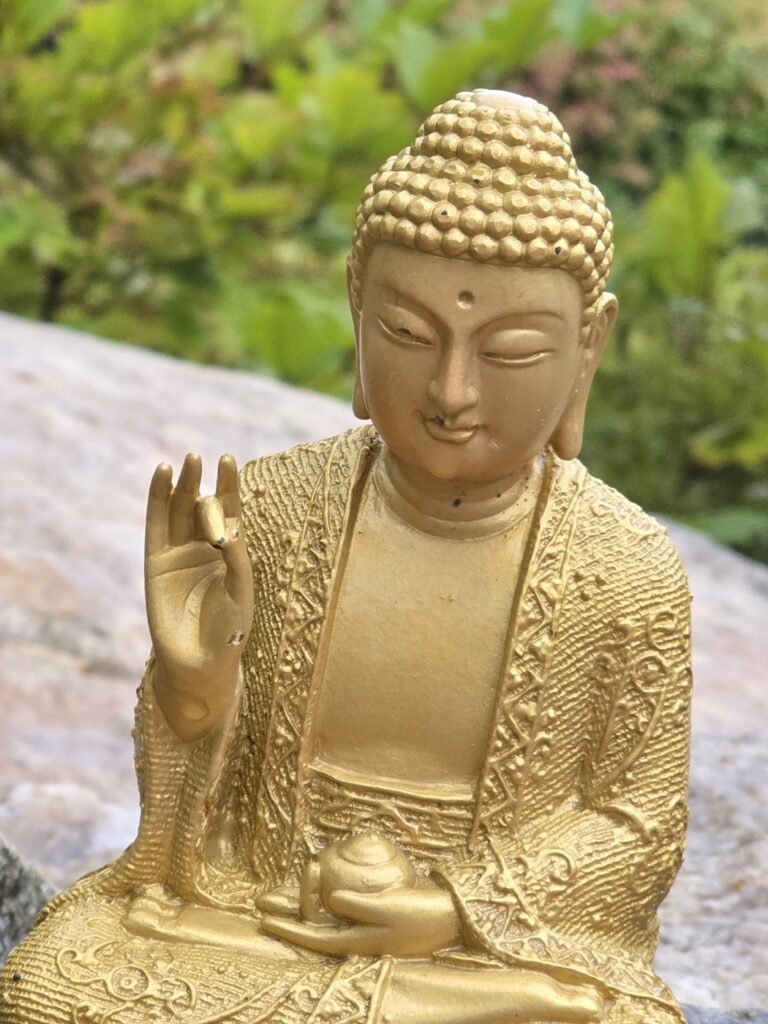
Seasonal Beauty of Yongmunsa
One of the joys of visiting Yongmunsa is that it looks different in every season.
Spring: Blossoms and Fresh Beginnings
In spring, the mountain paths leading up to Yongmunsa are lined with cherry blossoms and azaleas. The temple grounds feel alive with renewal, and the ginkgo tree begins to sprout its fresh green leaves. Monks often hold outdoor ceremonies, and the gentle mountain air makes hiking to the temple particularly pleasant.
Summer: Lush Green and Cool Shade
Summer brings lush greenery to the valleys of Yangpyeong. The ginkgo tree provides generous shade, and the surrounding mountains create a cooler microclimate compared to Seoul. Many families and students on vacation visit during this time, and the sound of cicadas fills the air. Streams nearby provide refreshing spots to rest before or after exploring the temple.
Autumn: Golden Glory
Autumn is the most famous season at Yongmunsa. The ginkgo tree turns a radiant gold, and maple leaves on the surrounding mountains blaze in shades of red and orange. The entire temple complex becomes a painter’s canvas, attracting photographers and nature lovers from across Korea. If you can only visit once, autumn is perhaps the most spectacular time.
Winter: Quiet and Snow-Covered Serenity
Winter transforms Yongmunsa into a place of quiet meditation. Snow often blankets the temple roofs and the massive ginkgo tree, creating a scene of peaceful isolation. Visitors can hear the crunch of snow beneath their feet and the distant echo of temple bells, making this season ideal for those seeking calm and solitude.
How to Get to Yongmunsa Temple
Reaching Yongmunsa is surprisingly straightforward, even for foreigners who don’t speak much Korean.
- By Train
- Take the ITX train or commuter subway line from Seoul to Yongmun Station (용문역) in Yangpyeong.
- The journey takes about 1.5–2 hours, depending on which line you use.
- From Yongmun Station to Yongmunsa
- Outside Yongmun Station, you will find shuttle buses and taxis that can take you toward the temple area.
- One of the most unique services is the restaurant-operated shuttle bus.
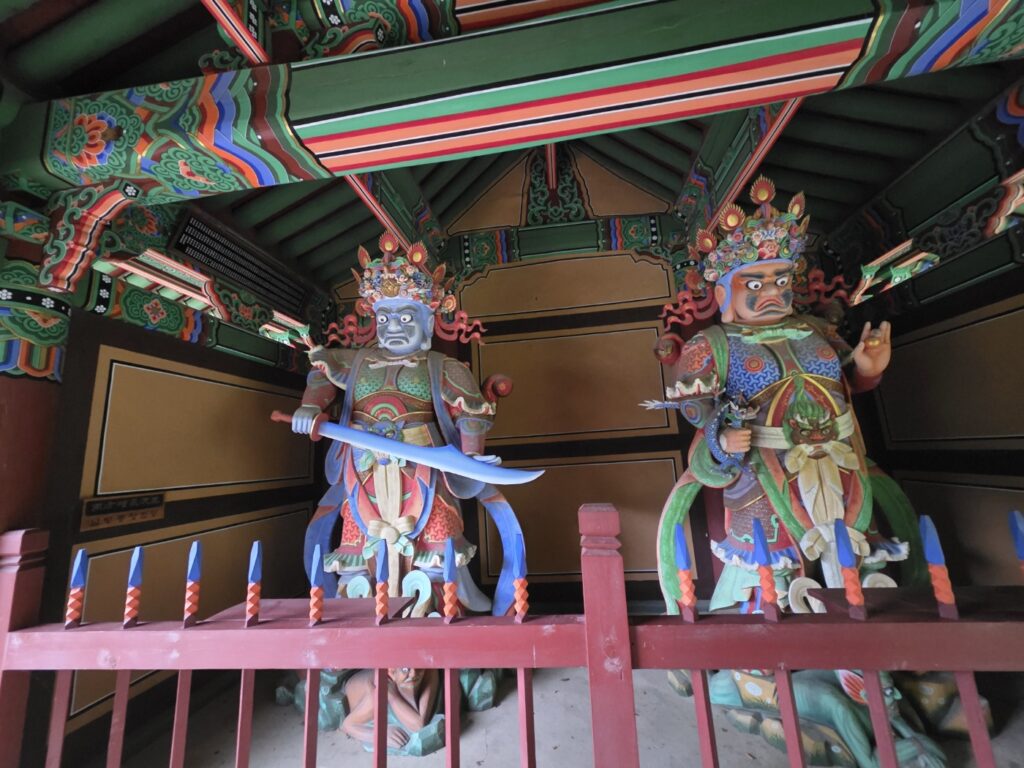
The Restaurant Shuttle Bus Experience
Many visitors don’t know about this, but some restaurants near Yongmun Station and close to Yongmunsa Temple offer a free shuttle service.
Here’s how it works:
- You board a shuttle bus in front of Yongmun Station, operated by certain restaurants.
- The shuttle takes you directly to the restaurant, which is located near the temple entrance.
- After enjoying a meal there—often traditional Korean dishes such as makguksu (buckwheat noodles), pajeon (green onion pancake), or various stews—the restaurant arranges a ride that drops you right at the temple gate.
- Once you finish exploring Yongmunsa, the same shuttle will take you back to Yongmun Station, making transportation seamless.
This arrangement may seem unusual for foreigners, but it is a win-win situation: the restaurant secures customers, and visitors get convenient transport without worrying about local buses or taxis. Fortunately, the food is usually good and reasonably priced, so most people find this to be a pleasant part of their journey.
Exploring the Temple Grounds
As you pass through the entrance, you’ll encounter several beautiful structures:
- Iljumun Gate: The “One Pillar Gate,” symbolizing the threshold between the secular and sacred worlds.
- Main Hall (Daeungjeon): Where the main Buddha statue resides.
- Bell Pavilion: Housing a massive bronze bell, often rung during ceremonies.
- Monastic Quarters: Residential buildings for monks, often off-limits but adding to the authenticity of the site.
The temple complex is built into the mountain landscape, so expect some uphill walking, but paths are well maintained.
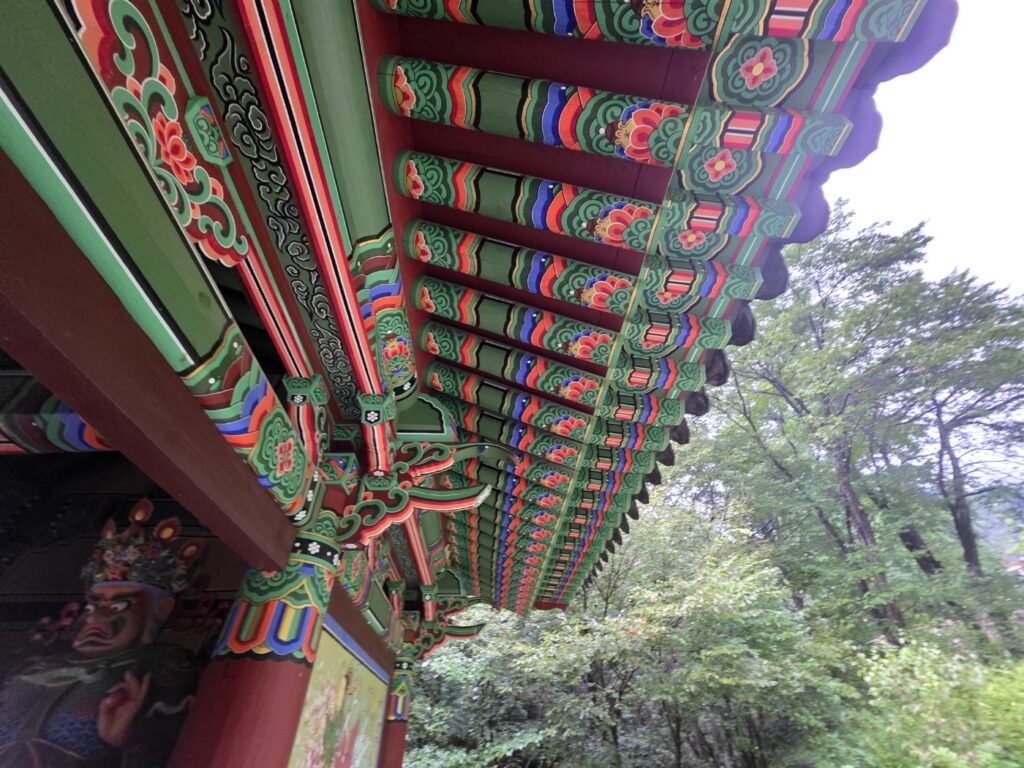
Temple Stay and Cultural Programs
For those who want a deeper experience, Yongmunsa also participates in Korea’s Temple Stay program. Visitors can stay overnight, join monks in meditation, participate in tea ceremonies, and learn about Buddhist practices.
This is a unique opportunity to step into a rhythm of life that has existed for centuries, far from the distractions of city life. Temple stays usually include simple vegetarian meals, guided tours, and time for personal reflection.
Dining Options Around Yongmunsa
Aside from the restaurant shuttle system, the area near the temple is dotted with eateries that cater to both locals and visitors. Common dishes include:
- Sanchae bibimbap (mountain vegetable rice bowl): A healthy and colorful dish made with seasonal greens.
- Pajeon and makgeolli: Perfect after a hike, this pairing is a Korean favorite.
- Local stews (jjigae): Warming and filling, especially in colder months.
The quality is generally reliable, and prices are moderate. Eating here not only solves your transportation needs but also enhances your cultural experience.
Travel Tips for Foreign Visitors
- Language: English may not be widely spoken, so learning a few Korean phrases or using a translation app helps.
- Footwear: Wear comfortable shoes for walking, as the temple is set on a mountain path.
- Photography: Respect temple rules; avoid flash inside halls and be mindful during prayer times.
- Best Season: Autumn is most photogenic, but winter provides the quietest experience.
- Cash vs Card: Most restaurants and shops accept cards, but carrying some cash is useful for small purchases or donations.
- Timing: Plan for at least half a day; with travel time from Seoul, a full day trip is ideal.
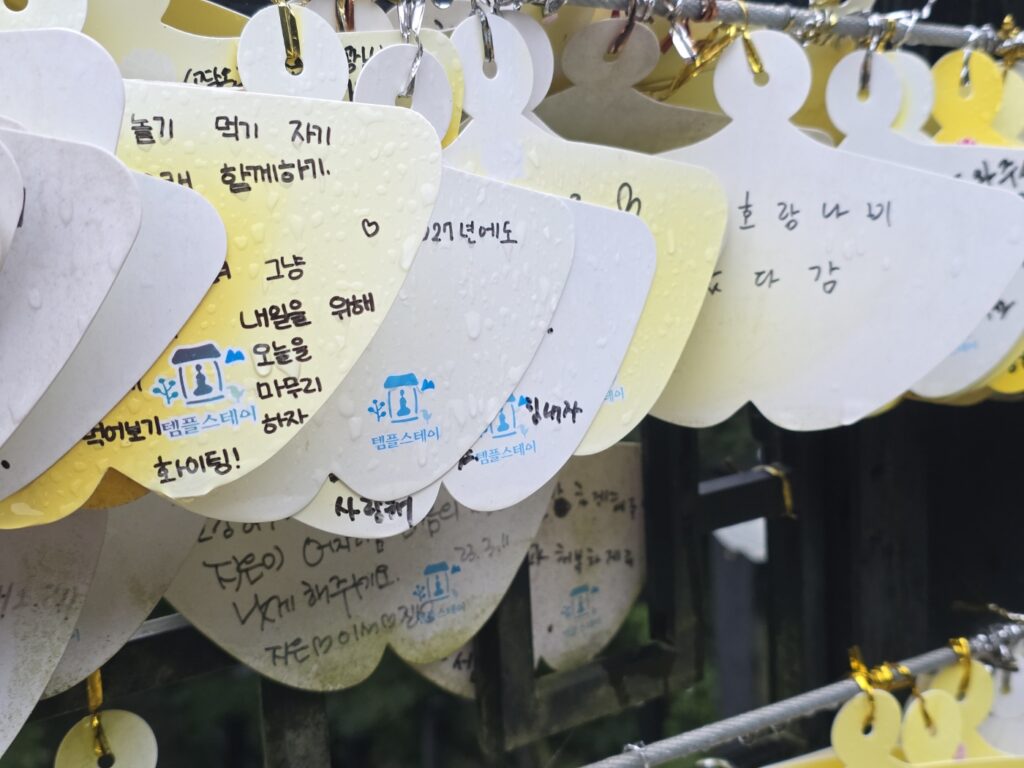
Why Yongmunsa Is Worth the Visit
Yongmunsa is not just another Buddhist temple. It is a place where history, nature, and spirituality come together in a uniquely Korean way. The giant ginkgo tree alone is worth the trip, but the temple’s seasonal beauty, accessible location, and the quirky restaurant shuttle bus make it especially appealing to curious travelers.
Whether you are a culture enthusiast, a photographer chasing autumn leaves, or simply a visitor who wants to breathe in fresh mountain air, Yongmunsa offers an unforgettable experience within easy reach of Seoul.
Conclusion
A trip to Yongmunsa Temple in Yangpyeong is a journey into the heart of Korean tradition. From its thousand-year-old ginkgo tree to the convenience of restaurant shuttle buses, it combines the sacred and the practical in a way that reflects Korea’s blend of history and modernity.
For foreigners, it’s not just about visiting a temple—it’s about stepping into a story that spans more than a millennium. If you’re planning your travels in Korea, make sure to include Yongmunsa on your itinerary. It is a destination where the past and present meet, where every season paints a new picture, and where even the journey itself—train rides, shuttle buses, and shared meals—becomes part of the adventure.

